
Sgt. Pepper's Lonely Hearts Club Band is the eighth studio album by the English rock band the Beatles. Released on 26 May 1967, Sgt. Pepper is regarded by musicologists as an early concept album that advanced the roles of sound composition, extended form, psychedelic imagery, record sleeves, and the producer in popular music. The album had an immediate cross-generational impact and was associated with numerous touchstones of the era's youth culture, such as fashion, drugs, mysticism, and a sense of optimism and empowerment. Critics lauded the album for its innovations in songwriting, production and graphic design, for bridging a cultural divide between popular music and high art, and for reflecting the interests of contemporary youth and the counterculture.
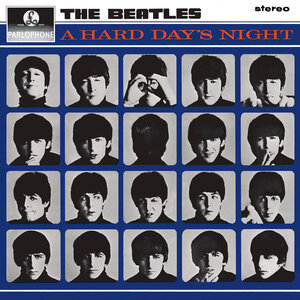
A Hard Day's Night is the third studio album by the English rock band the Beatles, released on 10 July 1964 by Parlophone, with side one containing songs from the soundtrack to their film of the same name. The American version of the album was released two weeks earlier, on 26 June 1964 by United Artists Records, with a different track listing that included selections from George Martin's film score. In contrast to the Beatles' first two albums, all 13 tracks on A Hard Day's Night were written by John Lennon and Paul McCartney, showcasing the development of their songwriting partnership.

Sir George Henry Martin was an English record producer, arranger, composer, conductor, and musician. He was commonly referred to as the "fifth Beatle" because of his extensive involvement in each of the Beatles' original albums. Martin's formal musical expertise and interest in novel recording practices facilitated the group's rudimentary musical education and desire for new musical sounds to record. Most of their orchestral and string arrangements were written by Martin, and he played piano or keyboards on a number of their records. Their collaborations resulted in popular, highly acclaimed records with innovative sounds, such as the 1967 album Sgt. Pepper's Lonely Hearts Club Band—the first rock album to win a Grammy Award for Album of the Year.

Let It Be is the twelfth and final studio album by the English rock band the Beatles. It was released on 8 May 1970, almost a month after the group's public break-up, in tandem with the documentary of the same name. Concerned about recent friction within the band, Paul McCartney had conceived the project as an attempt to reinvigorate the group by returning to simpler rock 'n' roll configurations. Its rehearsals started at Twickenham Film Studios on 2 January 1969 as part of a planned television documentary showing the Beatles' return to live performance.

"Penny Lane" is a song by the English rock band the Beatles that was released as a double A-side single with "Strawberry Fields Forever" in February 1967. It was written primarily by Paul McCartney and credited to the Lennon–McCartney songwriting partnership. The lyrics refer to Penny Lane, a street in Liverpool, and make mention of the sights and characters that McCartney recalled from his upbringing in the city.

"Let It Be" is a song by the English rock band the Beatles, released on 6 March 1970 as a single, and as the title track of their album Let It Be. It was written and sung by Paul McCartney, and credited to the Lennon–McCartney partnership. The single version of the song, produced by George Martin, features a softer guitar solo and the orchestral section mixed low, compared with the album version, produced by Phil Spector, featuring a more aggressive guitar solo and the orchestral sections mixed higher.
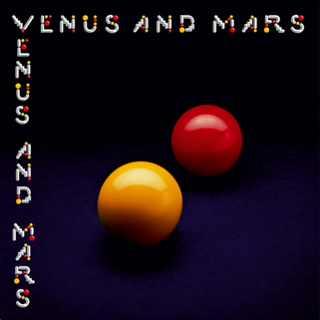
Venus and Mars is the fourth studio album by the British–American rock band Wings. Released in May 1975 as the follow-up to Band on the Run, Venus and Mars continued Wings' run of commercial success and provided a springboard for a year-long worldwide tour. The album was Paul McCartney's first post-Beatles album to be released worldwide by Capitol Records rather than Apple.

Godley & Creme were an English rock duo formally established in Manchester in 1977 by Kevin Godley and Lol Creme. The pair began releasing music as a duo after their departure from the rock band 10cc. In 1979, they directed their first music video for their single "An Englishman in New York". After this, they became involved in the production of videos for artists such as Ultravox, the Police, Yes, Duran Duran, Frankie Goes to Hollywood, Huey Lewis and the News and Wang Chung, as well as directing the groundbreaking video for their 1985 single "Cry". The duo split at the end of the 1980s. Both have since been involved in music videos, TV commercials, and sporadic music projects.
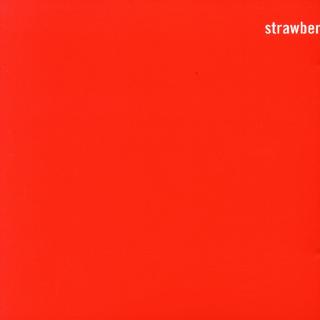
Strawberries Oceans Ships Forest is the first album by the Fireman, released in 1993.
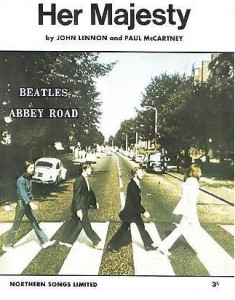
"Her Majesty" is a song by the English rock band the Beatles, from their 1969 album Abbey Road. Written by Paul McCartney and credited to Lennon–McCartney, it is a brief tongue-in-cheek music hall song. McCartney is the only musician to appear on the track. "Her Majesty" is the final cut on the album and appears 14 seconds after the previous song "The End", but was not listed on the original sleeve. Some observers consider it the first example of a hidden track.

"Things We Said Today" is a song by the English rock band the Beatles, written by Paul McCartney and credited to Lennon–McCartney. It was released in July 1964 as the B-side to the single "A Hard Day's Night" and on their album of the same name, except in North America, where it appeared on the album Something New. The band recorded the song twice for BBC Radio and regularly performed an abbreviated version during their 1964 North American tour.
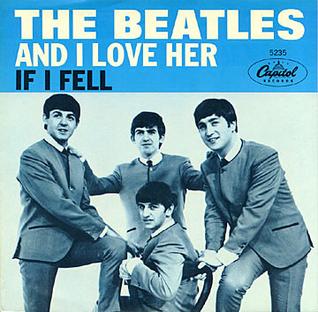
"And I Love Her" is a song recorded by English rock band the Beatles, written primarily by Paul McCartney and credited to the Lennon–McCartney partnership. It is the fifth track of their third UK album A Hard Day's Night and was released 20 July 1964, along with "If I Fell", as a single release by Capitol Records in the United States, reaching No. 12 on the Billboard Hot 100.

Press to Play is the sixth solo studio album by English musician Paul McCartney, released on 25 August 1986. It was McCartney's first album of entirely new music since Pipes of Peace in 1983, and his first solo album to be issued internationally by EMI following a six-year alliance with Columbia Records in the United States and Canada. Keen to re-establish himself after his poorly received 1984 musical film Give My Regards to Broad Street, McCartney enlisted producer Hugh Padgham to give the album a contemporary sound.

Eric Michael Stewart is an English singer-songwriter, multi-instrumentalist and record producer, best known as a founding member of the rock groups the Mindbenders with whom he played from 1963 to 1968, and likewise of 10cc from 1972 to 1995. Stewart co-owned Strawberry Studios in Stockport, England, from 1968 to the early 1980s, where he recorded albums with 10cc and artists including Neil Sedaka and Paul McCartney. Stewart collaborated with McCartney extensively in the 1980s, playing on or co-writing songs for McCartney's solo albums Tug of War (1982), Pipes of Peace (1983), Give My Regards to Broad Street (1984), and Press to Play (1986). Since 1980, Stewart has released four solo studio albums.
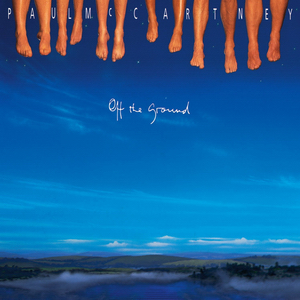
Off the Ground is the ninth solo studio album by Paul McCartney, released on 1 February 1993. As his first studio album of the 1990s, it is also the follow-up to the well received Flowers in the Dirt (1989).
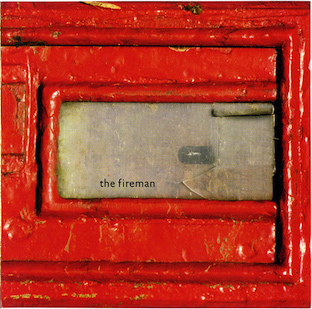
Rushes is the second album by the Fireman, released in 1998.

Strawberry Studios was a recording studio in Stockport, historically in Cheshire, now within Greater Manchester, England. Founded in 1968, it operated until the early 1990s. Strawberry Studios became one of the finest professional recording studios in the United Kingdom outside London used by a range of artists including 10cc, Joy Division, Neil Sedaka, Barclay James Harvest, The Smiths, The Stone Roses, The Moody Blues, Paul McCartney, Wax and Cliff Richard.
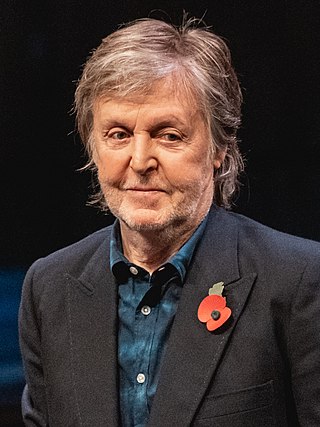
Sir James Paul McCartney is an English singer, songwriter and musician who gained worldwide fame with the Beatles, for whom he played bass guitar and shared primary songwriting and lead vocal duties with John Lennon. One of the most successful composers and performers of all time, McCartney is known for his melodic approach to bass-playing, versatile and wide tenor vocal range, and musical eclecticism, exploring genres ranging from pre–rock and roll pop to classical, ballads, and electronica. His songwriting partnership with Lennon is the most successful in modern music history.

Electric Arguments is the third album by the Fireman. The album was first announced 29 September 2008, on Paul McCartney's website, and was released on 24 November 2008 on the duo's website. It is the first Fireman release to be publicly acknowledged by McCartney, and the album cover features the names of both contributors in contrast to the anonymity of earlier works.



















